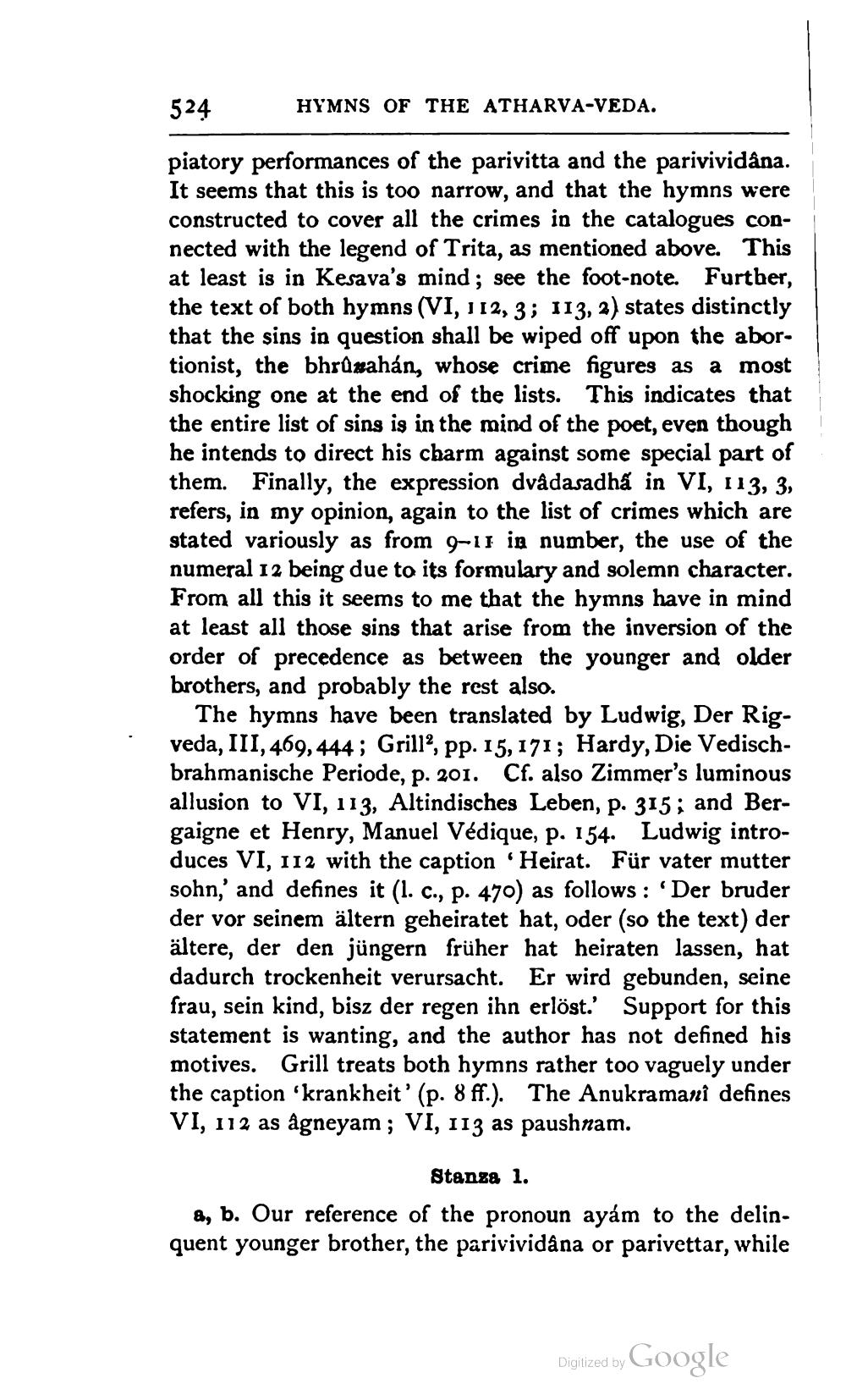________________
524
HYMNS OF THE ATHARVA-VEDA.
piatory performances of the parivitta and the parivividåna. It seems that this is too narrow, and that the hymns were constructed to cover all the crimes in the catalogues connected with the legend of Trita, as mentioned above. This at least is in Kesava's mind; see the foot-note. Furtber, the text of both hymns (VI, 112, 3; 113, 2) states distinctly that the sins in question shall be wiped off upon the abor. tionist, the bhrůzahán, whose crime figures as a most shocking one at the end of the lists. This indicates that the entire list of sins is in the mind of the poet, even though he intends to direct his charm against some special part of them. Finally, the expression dvådasadha in VI, 113, 3, refers, in my opinion, again to the list of crimes which are stated variously as from 9-11 in number, the use of the numeral 12 being due to its formulary and solemn character. From all this it seems to me that the hymns have in mind at least all those sins that arise from the inversion of the order of precedence as between the younger and older brothers, and probably the rest also.
The hymns have been translated by Ludwig, Der Rigveda, III, 469, 444; Grill?, pp. 15, 171; Hardy, Die Vedischbrahmanische Periode, p. 201. Cf. also Zimmer's luminous allusion to VI, 113, Altindisches Leben, p. 315; and Bergaigne et Henry, Manuel Védique, p. 154. Ludwig introduces VI, 112 with the caption 'Heirat. Für vater mutter sohn,' and defines it (1. c., p. 470) as follows: 'Der bruder der vor seinem ältern geheiratet hat, oder (so the text) der ältere, der den jüngern früher hat heiraten lassen, hat dadurch trockenheit verursacht. Er wird gebunden, seine frau, sein kind, bisz der regen ihn erlöst.' Support for this statement is wanting, and the author has not defined his motives. Grill treats both hymns rather too vaguely under the caption ‘krankheit' (p. 8 ff.). The Anukramanî defines VI, 112 as agneyam ; VI, 113 as paushnam.
Stanza 1. a, b. Our reference of the pronoun ayám to the delinquent younger brother, the parivividâna or parivettar, while
Digized by Google




